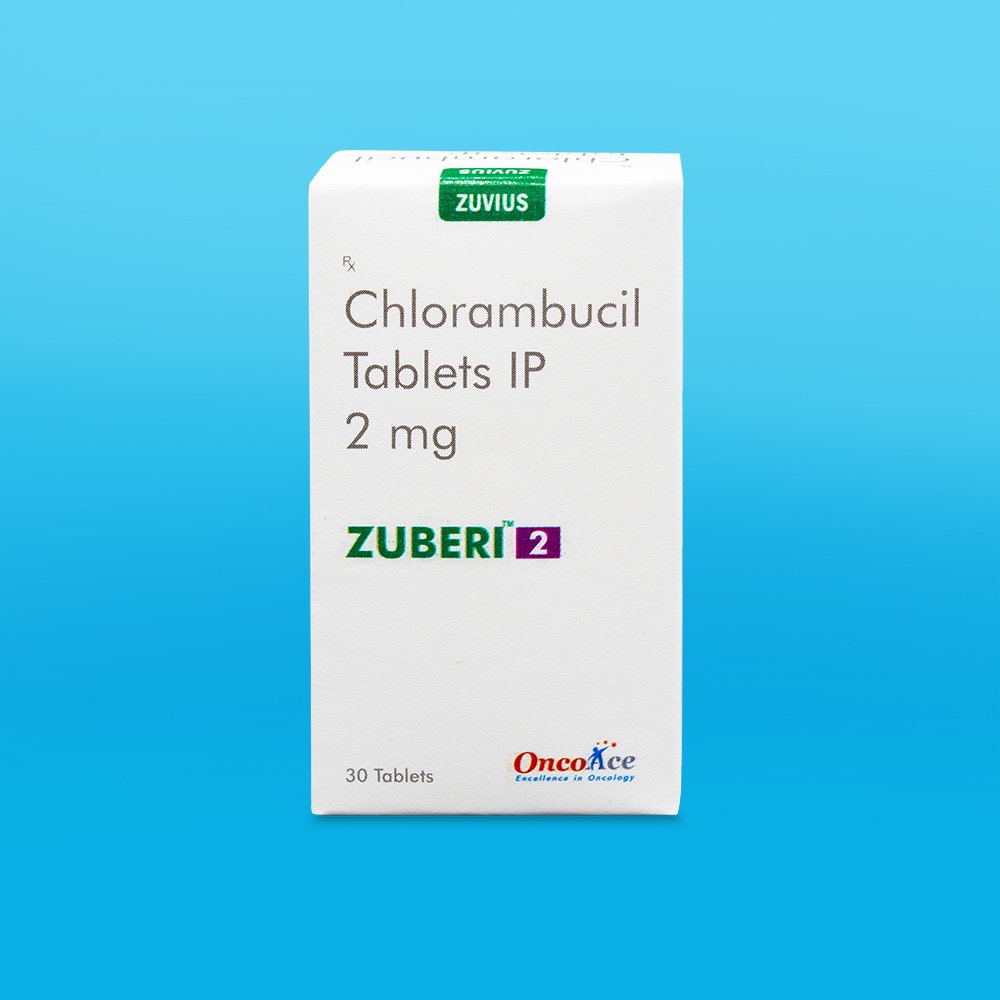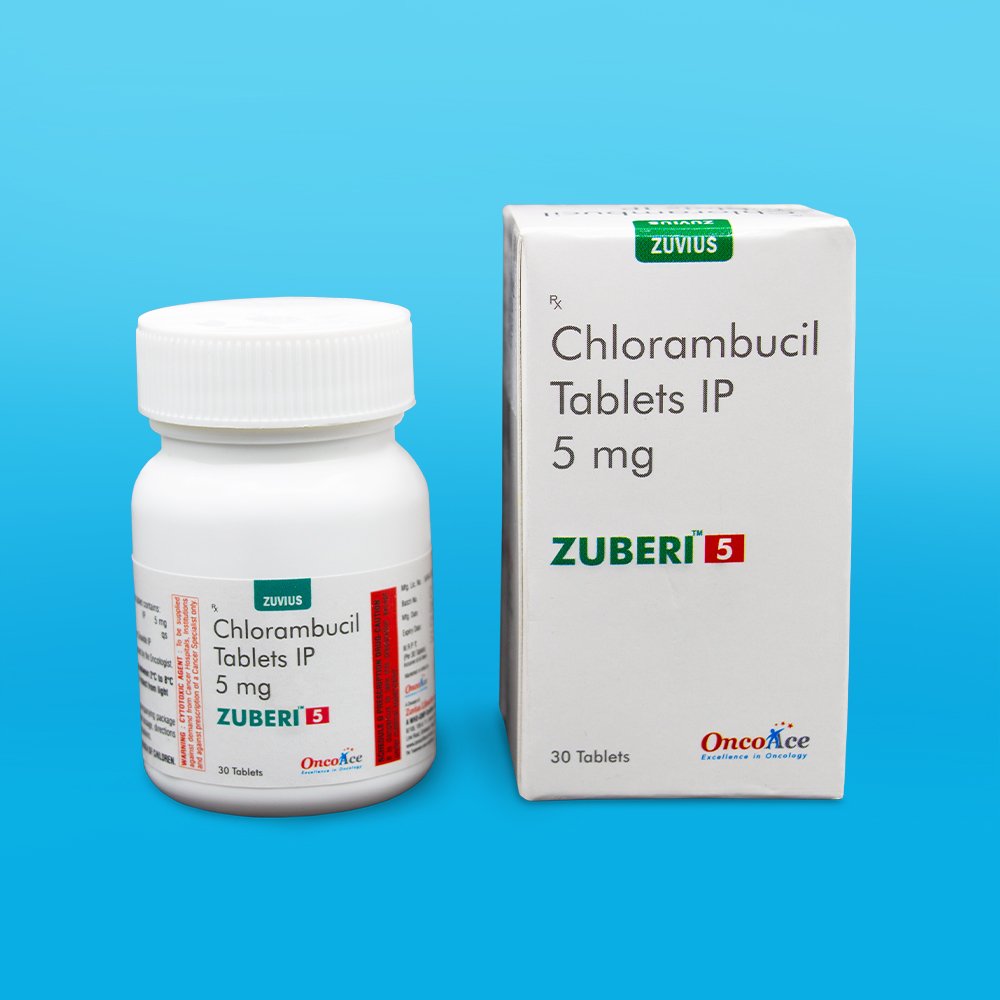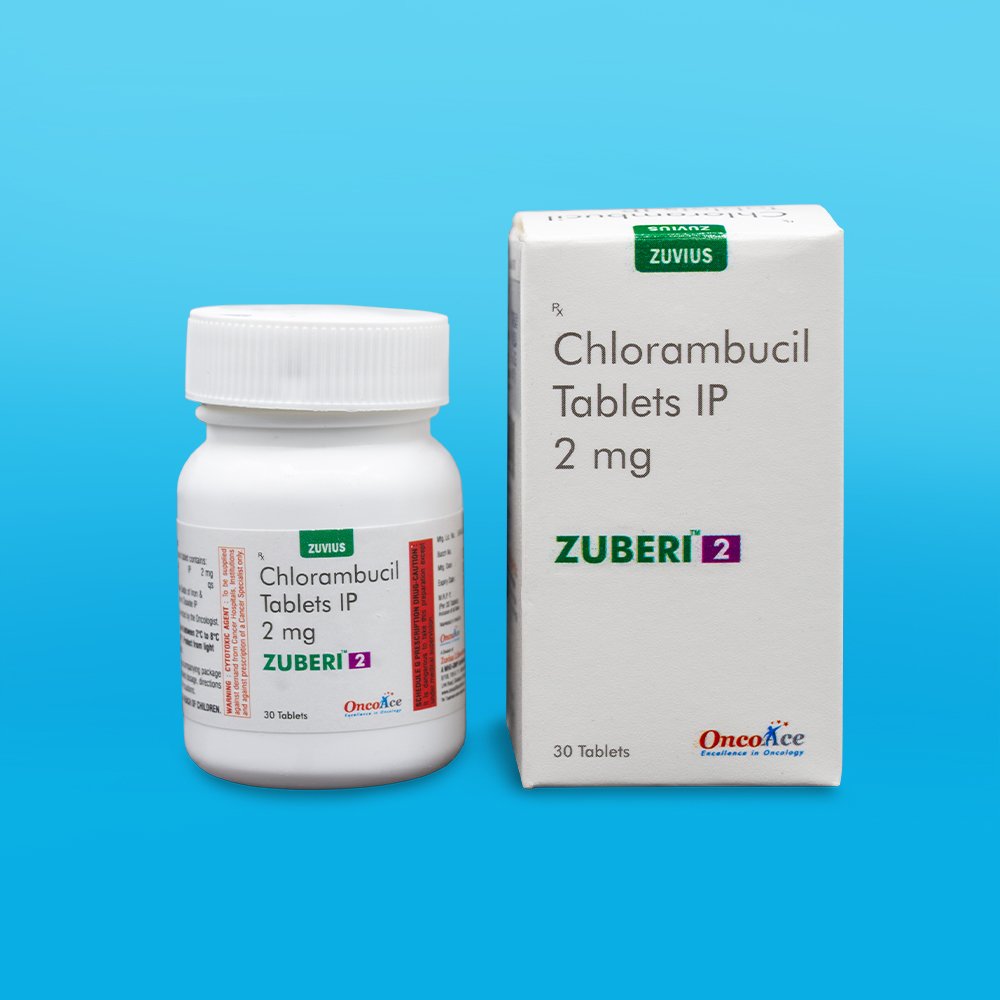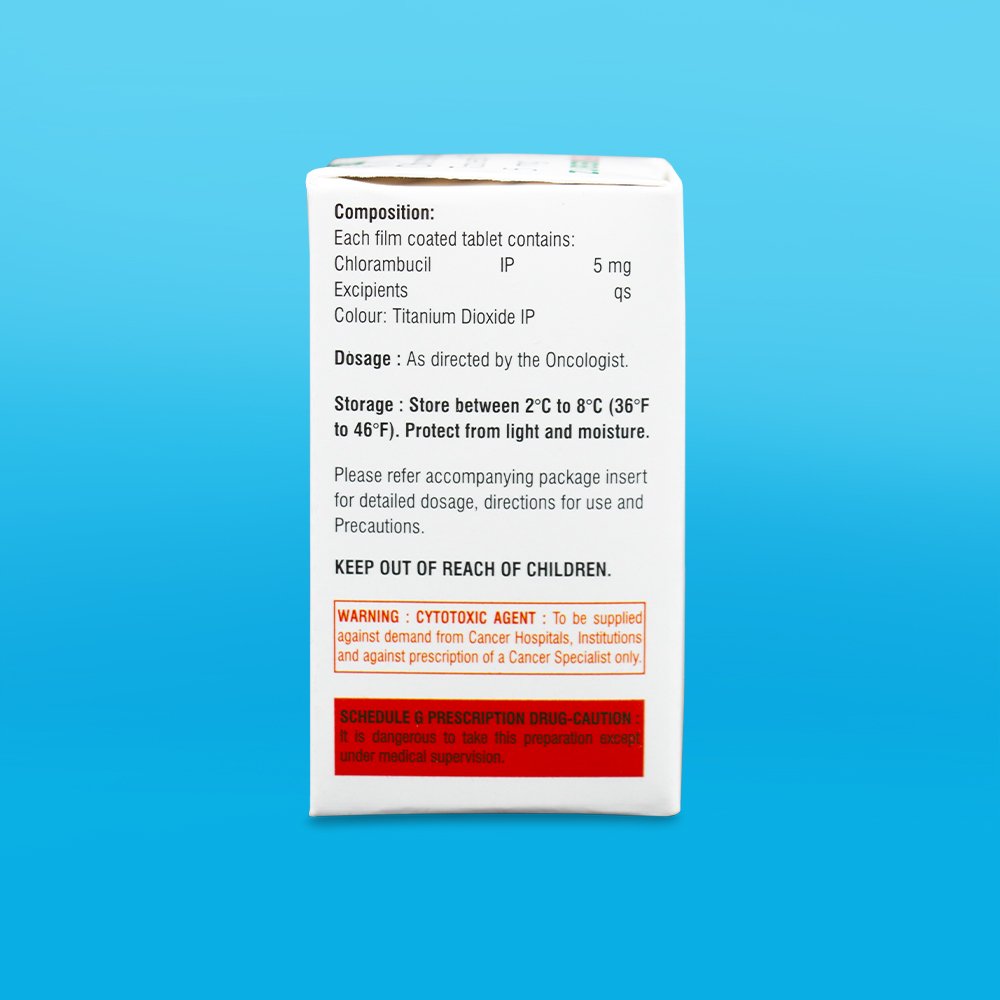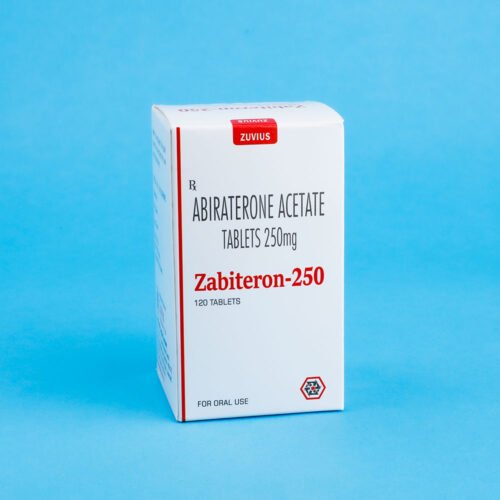Zuberi Tab- Chlorambucil Tablets 2mg
Chlorambucil Tablets
Strength: 2 & 5 mg
Pack Size: 1 x 30
Drug Class: Alkylating Agents
Dosage and Administration:
The usual oral dosage is 0.1 to 0.2 mg/kg body weight daily for 3 to 6 weeks as required. This usually amounts to 4 to 10 mg per day for the average patient. The entire daily dose may be given at one time. These dosages are for initiation of therapy or for short courses of treatment. The dosage must be carefully adjusted according to the response of the patient and must be reduced as soon as there is an abrupt fall in the white blood cell count. Patients with Hodgkin’s disease usually require 0.2 mg/kg daily, whereas patients with other lymphomas or chronic lymphocytic leukemia usually require only 0.1 mg/kg daily. When lymphocytic infiltration of the bone marrow is present, or when the bone marrow is hypoplastic, the daily dose should not exceed 0.1 mg/kg (about 6 mg for the average patient). Alternate schedules for the treatment of chronic lymphocytic leukemia employing intermittent, biweekly, or once-monthly pulse doses of chlorambucil have been reported. Intermittent schedules of chlorambucil begin with an initial single dose of 0.4 mg/kg. Doses are generally increased by 0.1 mg/kg until control of lymphocytosis or toxicity is observed. Subsequent doses are modified to produce mild hematologic toxicity. It is felt that the response rate of chronic lymphocytic leukemia to the biweekly or once-monthly schedule of chlorambucil administration is similar or better to that previously reported with daily administration and that hematologic toxicity was less than or equal to that encountered in studies using daily chlorambucil.
Cold Storage: yes
(chlorambucil) was first synthesized by Everett et al. It is a bifunctional alkylating agent of the nitrogen mustard type that has been found active against selected human neoplastic diseases.
Chlorambucil is known chemically as 4-[bis(2-chlorethyl)amino]benzenebutanoic acid and has the following structural formula:
Chlorambucil hydrolyzes in water and has a pKa of 5.8.
Chlorambucil is indicated in the treatment of chronic lymphatic (lymphocytic) leukemia, malignant lymphomas including lymphosarcoma, giant follicular lymphoma, and Hodgkin’s disease. It is not curative in any of these disorders but may produce clinically useful palliation.
Chlorambucil was administered by mouth in doses ranging from 5 to 30 mg. daily for five to seven weeks, so than an average course amounted to 350 mg. Thirty patients were thus treated for lymphocytic leukemias and various lymphomas. In the largest group, patients with chronic lymphocytic leukemia, 3 patients obtained excellent results, in that the hemoglobin level and white blood cell count returned to normal, the differential count was significantly improved, and hepatosplenomegaly and lymph node enlargement disappeared. Eight other patients of this group obtained good results in that the white blood cell count fell, the hemoglobin level rose, the differential count improved, and the liver, spleen, and lymph nodes decreased in size. Results in cases of lymphocytic lymphosarcoma and Hodgkin’s disease were less encouraging. In the dosages used, chlorambucil was practically without side-effects.
Pregnancy
As with all cytotoxic therapy chemotherapy, adequate contraceptive precautions should be advised when either partner is receiving Chlorambucil.
The use of Chlorambucil should be avoided whenever possible during pregnancy, particularly during the first trimester. In any individual case, the potential hazard to the foetus must be balanced against the expected benefit to the mother.
Breast-feeding
Mothers receiving Chlorambucil should not breast feed.
Fertility:
Chlorambucil may cause suppression of ovarian function and amenorrhoea has been reported following chlorambucil therapy.
Azoospermia have been observed as a result of therapy with chlorambucil although it is estimated that a total dose of at least 400 mg is necessary.
Varying degrees of recovery of spermatogenesis have been reported in patients with lymphoma following treatment with Chlorambucil in total doses of 410-2600 mg.
Teratogenicity
As with other cytotoxic agents Chlorambucil is potentially teratogenic.
- Chlorambucil can make you more likely to get infections or may make current infections worse.
- Stay away from anyone who has an infection that may easily spread
- You should not breastfeed while using this medicine.

